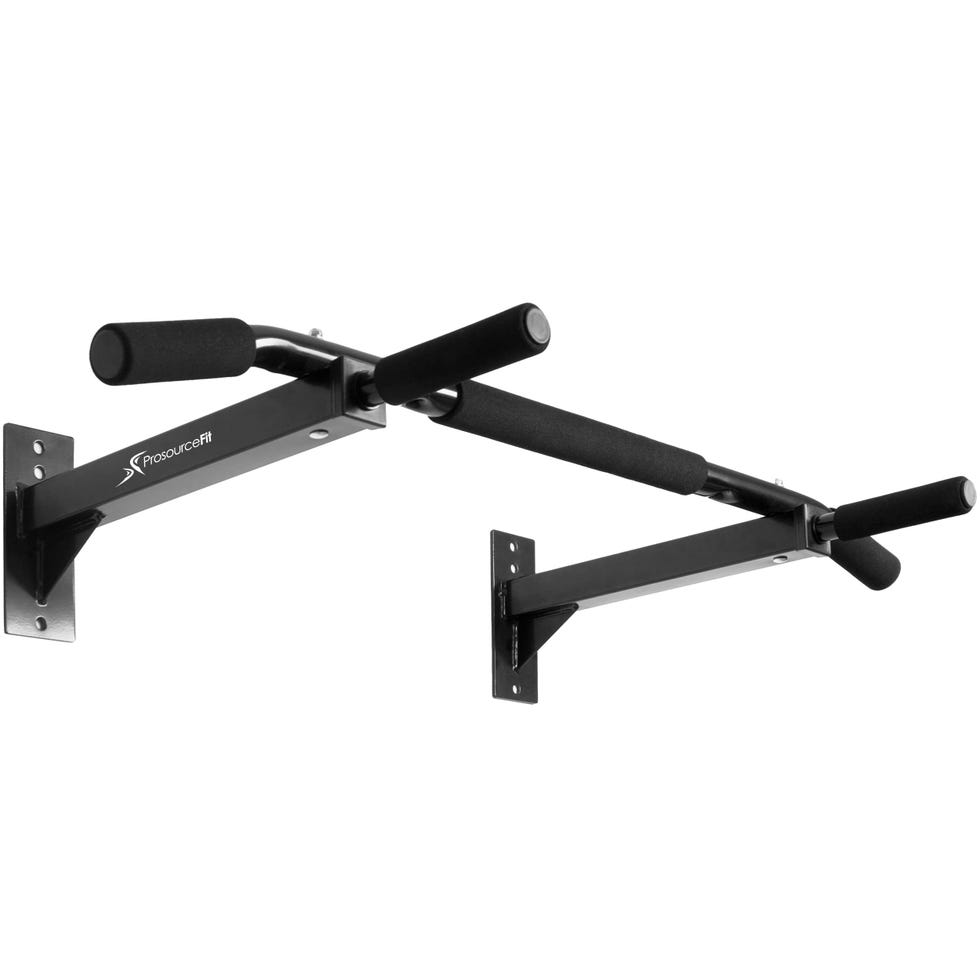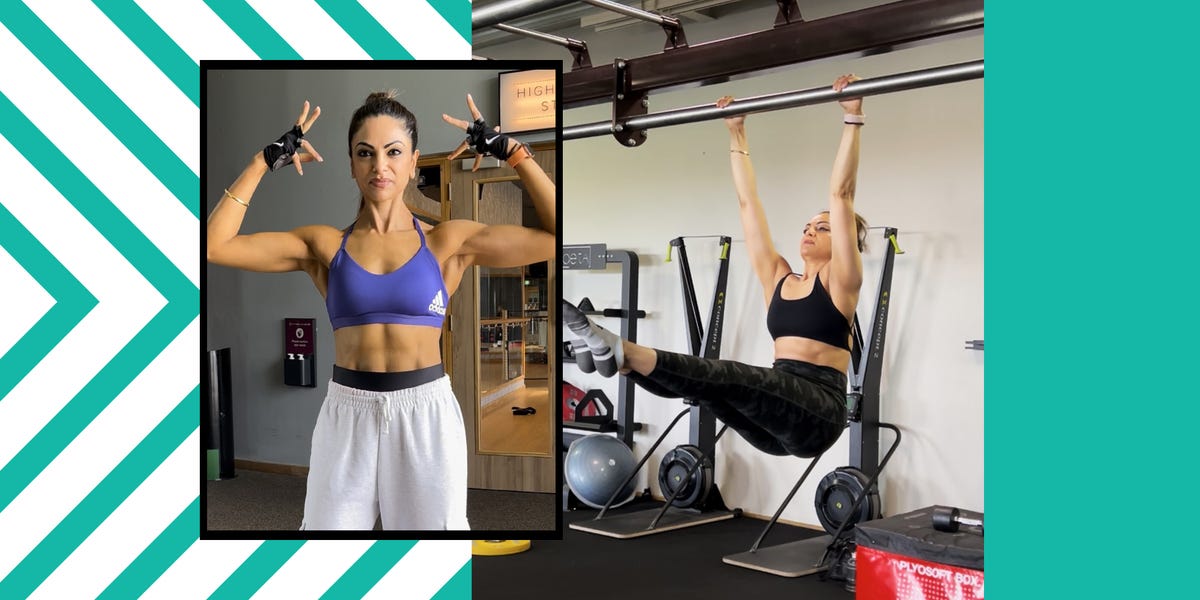After having my first child at 24, my mental health took a serious toll. I didn’t know it at the time, but I was in the throes of postpartum depression—constantly feeling sad, lonely, and anxious. I expected the feelings to eventually pass, but when I had my second child two years later, my depression and anxiety only got worse, and I didn’t feel like myself mentally.
Then, over the next several years, I was diagnosed with a series of physical health conditions, including polycystic ovary syndrome (PCOS), osteopenia, sciatica, and vertigo, as well as a herniated disk and shoulder impingement from years of poor posture, a sedentary desk job, and very little physical activity. I was fragile in every sense: physically in pain, mentally drained, and emotionally disconnected from myself and my family. I felt trapped in my body and was at an all-time low, experiencing negative self-talk and even suicidal thoughts.
It wasn’t until a month before my 40th birthday that everything changed.
In 2021, I randomly came across a 12-week transformation challenge run by the online fitness platform FITTR. The goal was to achieve noticeable body recomposition—whether that was fat loss, muscle gain, or both—and submit before and after progress photos each week. I was so inspired by the incredible stories of past participants, I realized that if they could do it, so could I.
The challenge didn’t include a structured program, but it strongly encouraged sustainable weight training and balanced nutrition, so I signed up, hired a coach, and committed to working hard. There were 44,000 participants worldwide and my goal was to be in the top 250.
I had never lifted weights, but with the help of my coach, I began strength training five to six days a week. At first, I had to modify exercises to tailor to my different injuries, but after six weeks of building strength and mobility, much of my chronic pain subsided and I felt stronger, happier, and more energetic. I was officially hooked.
I also evaluated my nutrition and ended up overhauling my diet. I always thought I ate relatively healthily since I rarely consumed ultra-processed food, but then I realized I ate mostly carbs and little protein. So, thanks to my coach, I learned to count and balance macros at every meal and prioritize protein for muscle growth and satiety. There’s a lot of noise around diet culture, but I kept things simple by focusing on fresh, whole, unprocessed foods.
Throughout the 12-week challenge, I was so focused on and excited about my goals and progress, I didn’t have time to dwell on negative self-talk. It paid off: I placed in the top 50 of participants. I gained a new sense of confidence and was so empowered that I could push myself to new limits.
Now, my workouts are a combination of strength training and calisthenics to build coordination and stability.
At 44, I lift heavy weights three days a week, and recently added two days of calisthenic workouts to improve my coordination, flexibility, and body awareness. I do a push/pull/legs workout split for heavy lifting days, and my calisthenics training includes bodyweight exercises like pull-ups, push-ups, pistol squats, and handstands. My workouts are usually an hour and a half long: I typically do five to six moves per session, with three to four sets of 12 to 14 reps, depending on the exercise and weight.
Upper body is my favorite muscle group to train, and I love my pull day workouts. At the start of my strength journey, one pull-up felt impossible, but now, I can do seven. As part of my calisthenics training, I’m currently working on mastering a muscle-up, but my ultimate upper body goal is to hold a handstand.
On top of resistance training, I aim for 10,000 steps a day and prioritize mobility and flexibility. Given my history of sciatica, I also stretch before and after every workout and regularly practice yoga as a form of active recovery on my off days.
When it comes to my diet, I aim to eat at least 100 grams of protein per day, so my fridge is always stocked with marinated fish and chicken (I don’t eat red meat). I also incorporate a variety of fresh, anti-inflammatory foods such as colorful fruits and dark leafy vegetables. When my meals are nourishing, I have more energy and feel better physically and mentally.
Best Overall
 ReLife Rebuild Your Life Power Tower Pull-Up Bar Station
ReLife Rebuild Your Life Power Tower Pull-Up Bar Station
Now 37% Off
Best Doorway Pull-Up Bar
Now 15% Off
Best Wall-Mounted Pull-Up Bar
 ProsourceFit Wall-Mounted Pull-Up Bar
ProsourceFit Wall-Mounted Pull-Up Bar
Initially, I closely counted macros to ensure I was hitting my nutritional goals, but now I eat intuitively since I understand generally how many macros there are in my meals. I also meal prep every week to eliminate guesswork during mealtime and properly fuel my gains in the gym.
I was successful in my strength transformation because of these three factors.1. I leaned on exercise as a source of peace.
I used to carry a lot of shame around my mental health struggles, but instead of silently suffering, I now lean on exercise to help keep my anxiety and depression at bay. For me, the gym isn’t just a place to train—it’s a space to breathe and recenter because every rep helps silence the noise in my head. I’ve accepted that anxiety will always be a part of my life, and that’s okay, but I no longer let it control me. Whether it’s going for a walk, practicing a new calisthenics skill, or crushing an intense workout, I’ve learned that movement is the best medicine for mental clarity.
2. I let go of self-doubt and learned to embrace confidence.
After years of dissociating from my body because of my health issues, the start of my journey was full of self-doubt. But once I realized that I’m the only one who can make judgments on how I feel, I unlocked a new sense of confidence. Instead of operating on a fear factor and worrying about judgement for what I can’t do, I learned to embrace what I can. Believing in myself and my capabilities has truly fueled my transformation.
3. I viewed fitness and balanced nutrition as a long-term lifestyle.
My commitment to weight training and nutrition has allowed me to rebuild what years of neglect, stress, and injury took away—it gave me a deep sense of ownership over my body while protecting my bones and supporting my hormonal health. This journey taught me that I’m worthy of self-love, and watching my body transformation allowed my mind to transform with it.
What started as a 12-week body recomposition challenge quickly became my lifestyle—as well as my career. After going through my own transformation, I trained to become a qualified nutritionist and fitness coach. It’s been so meaningful to help other women, especially over 40, reconnect with their strength, confidence, and sense of self.
It’s been four years since my initial transformation, but strength training has truly given me back a life I thought I’d lost, and I have no intention of stopping. Today, I’m so grateful to be happier and healthier than I could have ever imagined was possible.
Andi Breitowich is a Chicago-based writer and graduate student at Northwestern Medill. She’s a mass consumer of social media and cares about women’s rights, holistic wellness, and non-stigmatizing reproductive care. As a former collegiate pole vaulter, she has a love for all things fitness and is currently obsessed with Peloton Tread workouts and hot yoga.



